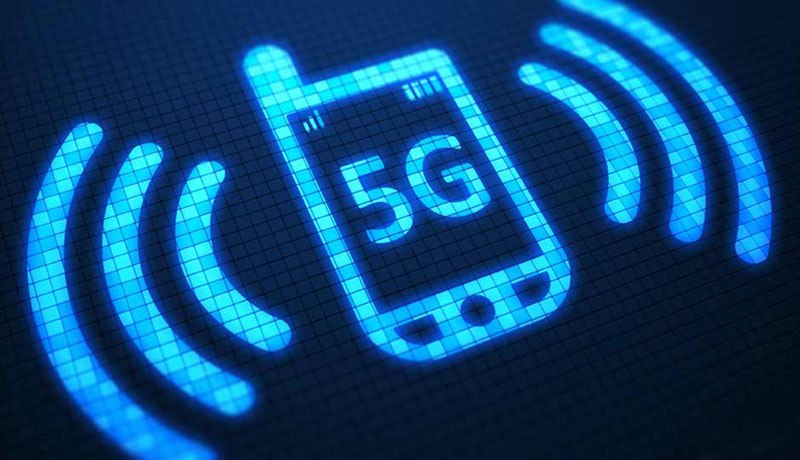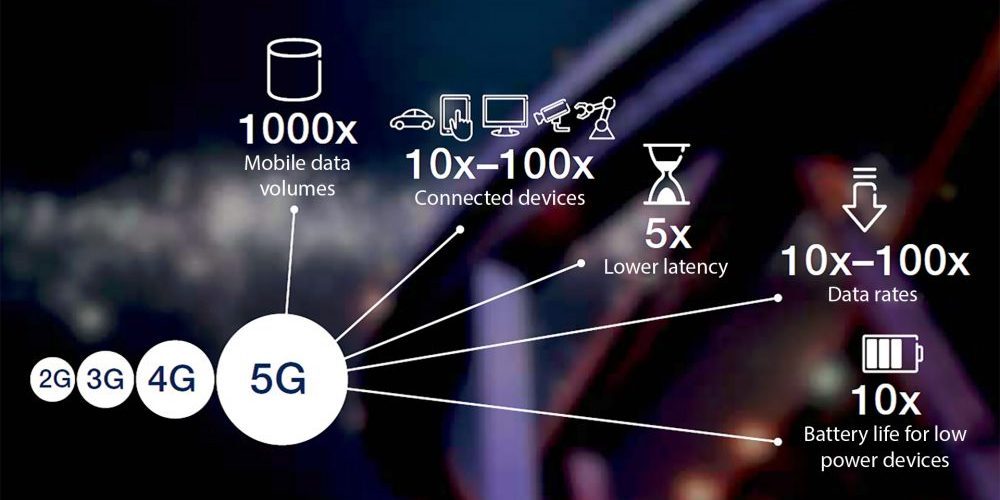At the gates are the new communication networks, the famous 5G and will bring a real revolution in the way of life we know today, not only in the field of economy, but also in health, transport, entertainment and of course in our daily lives.
Πbut when the commercial use of 5G networks is expected. At what stage is the preparation? What changes are expected in our lives and when?

The pan-European "5G Strategy" program has already been launched in several countries, leading the ecosystem to achieve the 5G growth milestones as set by the European Commission. These, in particular, include:
- by 2018 to define the 5G strategy for each EU country,
- by 2020 to start commercial use of 5G network in a selected city in each member country and finally,
- by 2025 to have a fully operational 5G network that will cover all urban areas and major land transport routes.

Therefore, by 2025 at the latest, all European countries are required to have extensive 5G coverage available, Dr Jakub Borkowski, Wireless Business Development Director for CEE & Nordic at Huawei, told APE-MPE.
According to this overall European strategy, each country sets its own target dates for 5G networks and, accordingly, some administrators set some very ambitious dates, such as e.g. the German T-Mobile that aims, by 2025, 90% of Germany to be covered by 5G.
To date, 181 pilot 5G networks have been reported in 23 European countries, according to a report by the EU's 5G Observatory.

Η Huawei has already introduced the first integrated 5G commercial solution a year ago and, since then, has signed more than 30 commercial contracts worldwide, 18 of which relate to the construction of 5G networks across Europe.
The first 5G commercial network was created in the summer of 2018 in Europe by the Finnish Elisa based on Huawei 5G technology.
It is predicted that within the year we will see many more launches of commercial 5G networks, following the presentation of the first 5G smartphones that will take place at the upcoming Mobile World Congress.
Globally, there are already more than 200 providers in 83 countries that have tested or been licensed to test 5G and related technologies, according to the GSA report. An interesting point is that, as of April 2018, there were 154 providers in 66 countries, conducting testing and investing in 5G, adds the high-ranking Huawei executive.
Unprecedented leap in broadband speeds
5G technology, says Dr Jakub Borkowski, promises an unprecedented leap in broadband speeds, compared to previous mobile networks. 5G technology will reduce latency and improve the overall network response. In addition, improving the network architecture will achieve the requirement for a total time delay of less than 5ms.
The most important feature of the new 5G networks is the Ultra -reliable low latency communication (URLLC) function that will lay a solid foundation for automation of applications between different industries, machine-to-machine services and public security applications.
All previous mobile communication technologies failed to provide reliable connectivity, which is a critical requirement for the vast majority of industrial applications. This will help companies reduce their operating costs, improve their operations and, at the same time, enable a variety of groundbreaking applications. Examples include: autonomous vehicles, connected drones for product deliveries, telemedicine services, and much more. In this way, 5G innovations are considered to lead to economic and social development in completely new ways.

Comparing existing mobile phone systems, 5G is the first to directly manage the digitization and automation of consumer services. It is therefore expected that 5G will revolutionize our way of life and will affect, in the long run, the way we perceive reality.
With 5G the user will always have at their disposal online, high quality, cloud-based content that includes: games, VR / AR applications, 4k / 8k video and much more. 5G smartphone will act as a gateway to the network and as a terminal connected, through extremely high speeds and with almost unlimited resources in the cloud. We can also expect with certainty that such technological availability and harmonious coexistence with the cloud, will lead to the development of innovative applications that will completely change the current way of using the Internet and digital technologies.
5G creates the smart interconnected world
Gradually, according to a senior Huawei executive, the 5G network will contribute to the development of many applications that will run more accurately and at lower cost.

For example, smart cities and smart homes will take care of our quality of life, our health will be under the constant care of computers that will process signals from sensors in our environment, parcels will be delivered by drones and public safety will be provided by interconnected fast response services, with the possibility of more effective action thanks to the constant availability of all the necessary information. In addition, we will use autonomous public transport and cars, which is considered a real revolution that significantly affects, with a positive impact, our way of life.
5G connected cars, smart generation, connected energy, e-health, home entertainment
Huawei, together with many partners, studied and analyzed the possible cases of 5G use and selected the top 10, the most promising and market-related applications. These include: connected cars, smart industrial production processes, connected energy, e-health, home entertainment, connected drones, smart cities and many other applications in areas where a first wave of 5G innovations is expected.
In particular, the market for connected cars will change radically as will many dependent sectors. Key technological trends fueling the mobility revolution include autonomous driving, collaborative mobility, and sensor data collection, and require secure, reliable, low-latency, and high-bandwidth connectivity. These features are fundamental to providing the performance needed at high speeds and in densely populated areas and only 5G technology can meet these stringent connectivity requirements.
Industrial automation is also changing
5G is expected to be a catalyst for industrial automation, says Dr Jakub Borkowski. Innovation is the heart of production. Major developments include actions leading to efficient and simple production processes, digitization and greater flexibility in handling operations as well as in production. The underlying business logic for implementing smart manufacturing is to deliver higher quality products to the market faster, with more flexible and efficient production systems.

There has recently been a strong trend in favor of the Internet of Things (IoT) sector. Historically, manufacturers have relied on wired technologies for their connected applications. However, wireless solutions, such as Wi-Fi and Bluetooth, have recently taken the lead in the manufacturing sector, but these wireless solutions face limitations in the security and reliability of broadband. At this point 5G technology is expected to bring about very significant changes and developments.
5G boosts Internet of Things (IoT) development
The majority of mobile connections in the future will be between machines and not between people. There are many more machines on the planet than humans and the relative difference in proportion will continue to grow. Already today, IoT services are gradually becoming an important source of revenue for ISP providers. wireless networks, without however being even the most basic.
Conventional network technologies, even LTE, are unable to handle millions of connected devices per square kilometer. The role of 5G is to manage the IoT market, in terms of providing a higher level of security and significantly increased capacity, ie a larger number of simultaneously connected sensors. Therefore, 5G is considered a strong foundation for the development of the IoT.

Technically speaking, the support standards for 5G IoT services are expected to be completed by 2020 by Standardization organizations, and by then, network administrators will be using the advanced LTE function, called NB-IoT (Narrowband-IoT). which, however, lags significantly behind the capabilities that 5G technology will provide in the future.
How much has Huawei invested in 5G networks? Huawei, he says, has been serving more than 3 billion people in 170 countries for more than 30 years, having invested more than 10 billion in the last 75 years. USD in Research and Development.
In the commercial sector, the company has already signed 30 commercial contracts and delivered over 25.000 5G base stations worldwide.
[the_ad_group id = ”966 ″]



